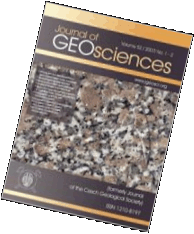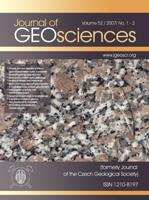 Export to Mendeley
Export to MendeleyBohemian Massif
Moldanubian Zone
West Sudetes
Central European Variscides
metamorphic structures
calc-alkaline plutons
More articles on Deep crustal metamorphism and lower-crustal/upper-mantle processes
Original Paper
Tectonometamorphic features of geological units along the northern periphery of the Moldanubian Zone
Journal of Geosciences, volume 54 (2009), issue 2, 87 - 100
DOI: http://doi.org/10.3190/jgeosci.046
In this paper are reviewed structural, petrological and geochronological data from the main units at the NE periphery of the Moldanubian Zone, i.e. Kutná Hora Complex, Svratka Unit, Polička and Zábřeh units, as well as the Strážek Unit of the Moldanubian Zone. In this domain of the Bohemian Massif, the lower- and upper-crustal units are dominated by metamorphic fabrics produced during the Variscan orogeny.
The mid- to upper-crustal Svratka, Polička and Zábřeh units are affected by ~MP/MT ”long-lived“ (~350-339 Ma) tectonometamorphic event reflecting ~WNW-ESE right-lateral strike-slip shearing (transpressional to transtensional tectonics). These regional fabrics are in the Polička and Zábřeh units related with syn-tectonic emplacement and crystallization of calc-alkaline intrusions (Zábřeh Intrusive Complex, Miřetín nad Budislav plutons). In the three structurally high units in the Kutná Hora Complex, Orlice-Sněžník and the Strážek units the strike-slip, ”long-lived“ tectonics is rather localized; the high-pressure, high-temperature events followed by heterogeneous and polyphase exhumation of deep-seated rocks to mid-crustal levels are preserved. Ultrapotassic rocks (durbachites) of the Strážek Unit, dated at ~339 Ma, intruded posttectonicaly.
Webdesign inspired by aTeo. Hosted at the server of the Institute of Petrology and Structural Geology, Charles University, Prague.
ISSN: 1803-1943 (online), 1802-6222 (print)
email: jgeosci(at)jgeosci.org


IF (WoS, 2022): 1.4
5 YEAR IF (WoS, 2022): 1.8
Policy: Open Access
ISSN: 1802-6222
E-ISSN: 1803-1943